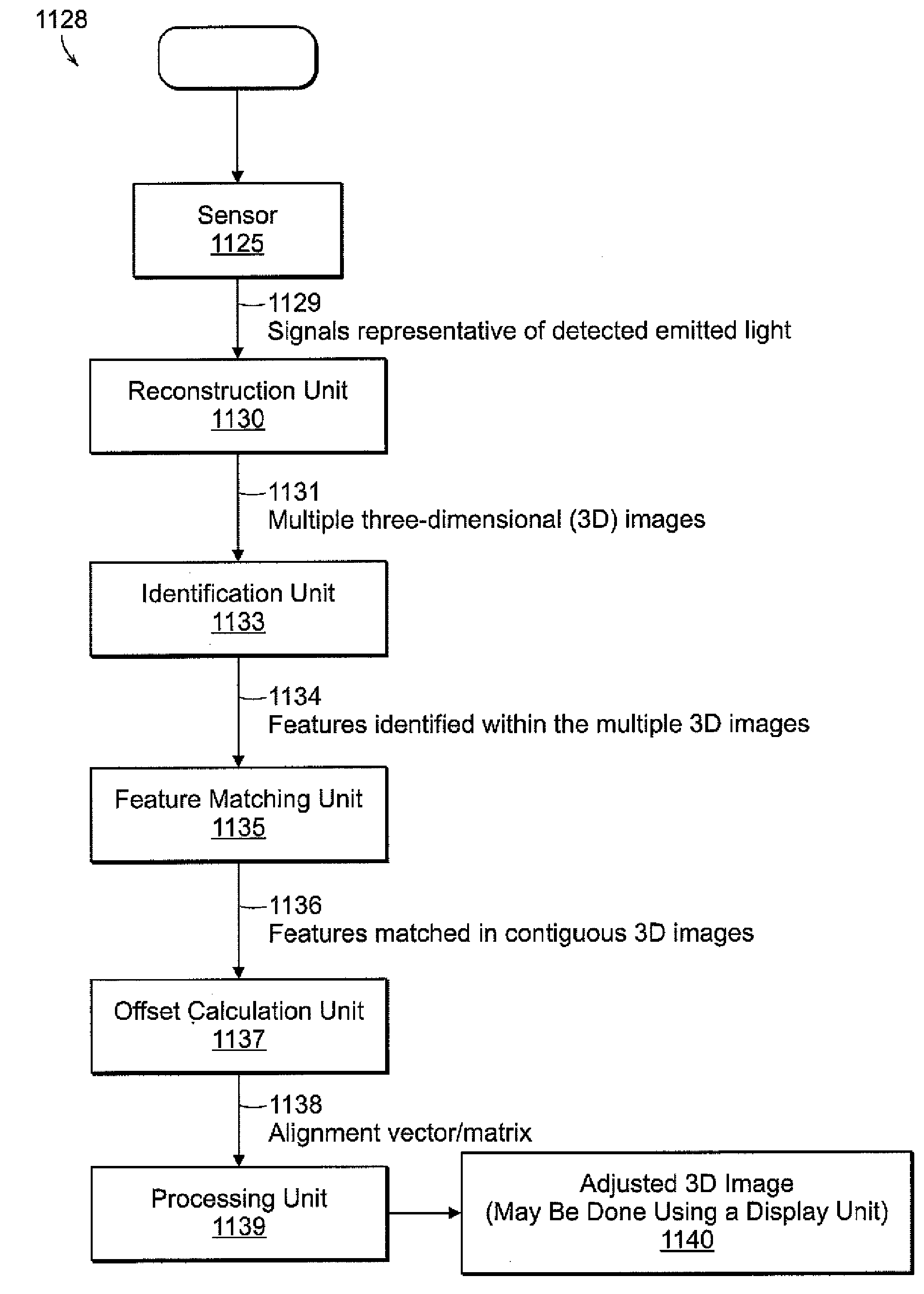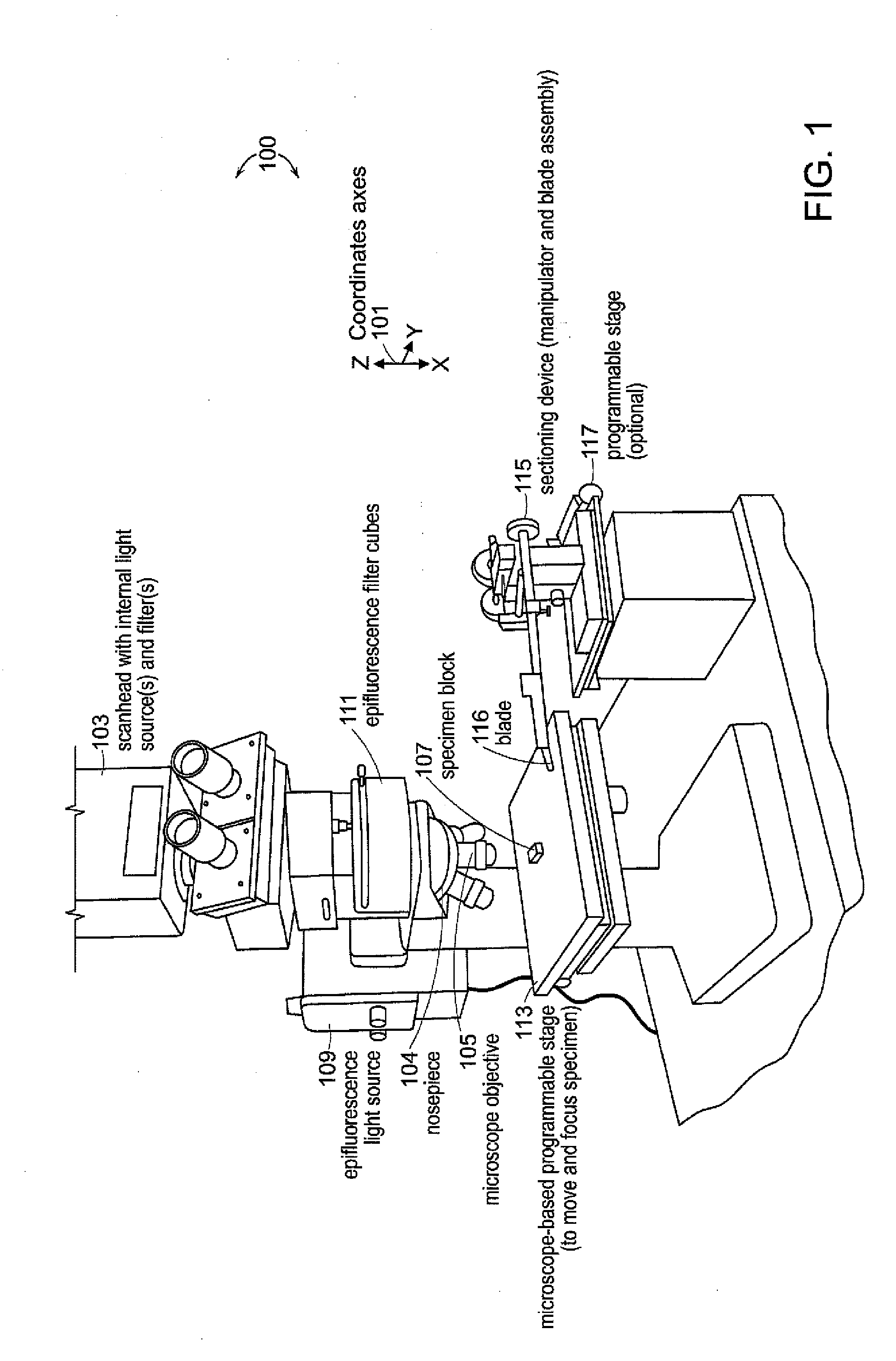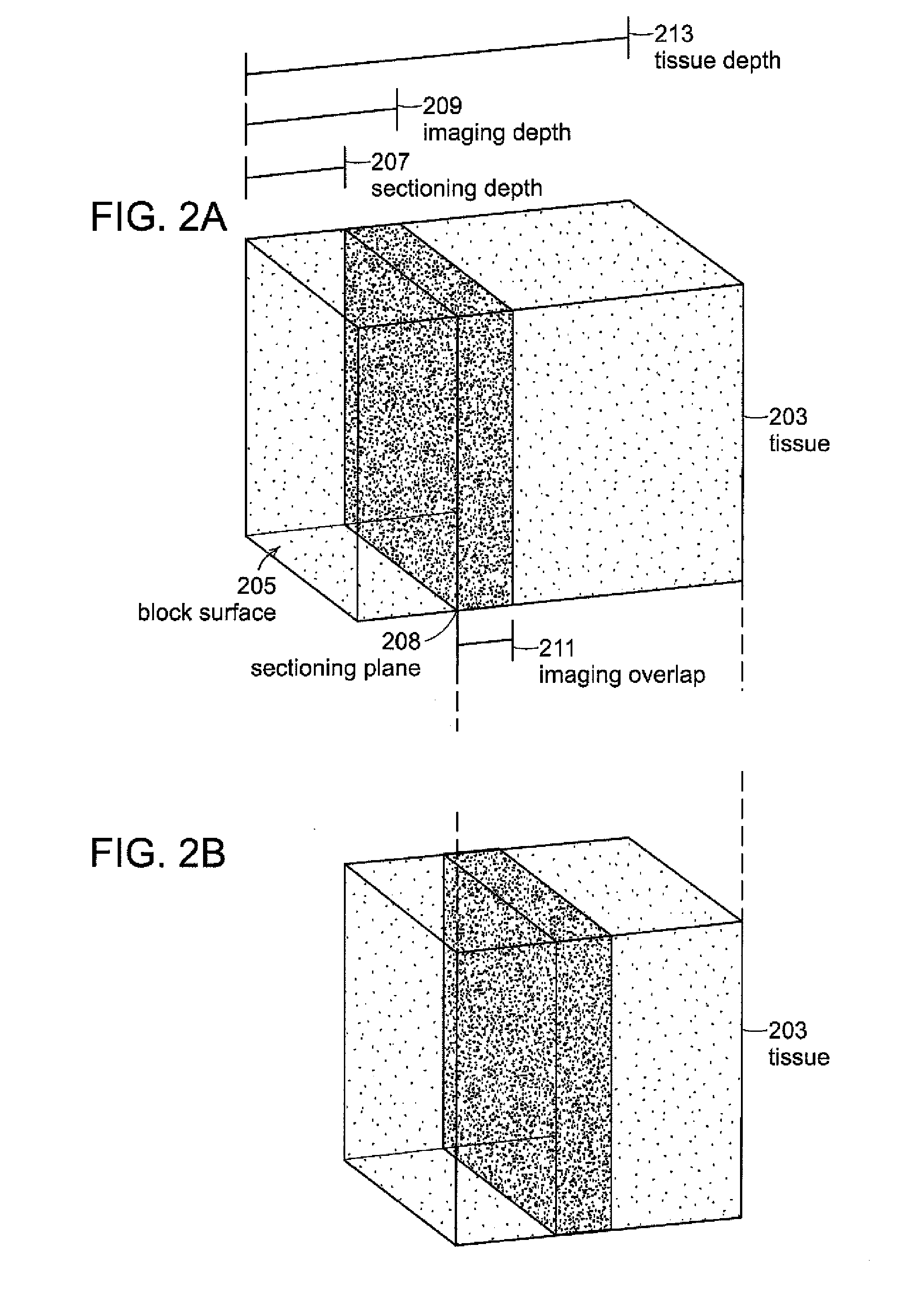System and methods for thick specimen imaging using a microscope based tissue sectioning device
a tissue sectioning device and microscope technology, applied in the field of system and methods for imaging of thick specimens using a microscope based tissue sectioning device, can solve the problems of difficult or impossible to describe the relationships of intact specimens within microscopes, and the resolution of structures may be viewed at the limit of light scattering, so as to achieve accurate imaging and sectioning
- Summary
- Abstract
- Description
- Claims
- Application Information
AI Technical Summary
Benefits of technology
Problems solved by technology
Method used
Image
Examples
Embodiment Construction
[0042]A description of example embodiments of the invention follows.
[0043]Investigations into the mechanisms underlying neural development, such as growth and differentiation, are enhanced by an ability to develop images of neural structure at a microscopic level. To label cells selectively, neuronal tracers can be injected at specific sites in the nervous system. In addition, transgenic mice are available that express fluorescent proteins in subsets of neurons. Techniques for imaging fluorescent structures in thick specimens include confocal and multi-photon microscopy; however, light scattering limits the depth at which signals can be acquired with high resolution. Electron microscopy and standard histology techniques overcome the limitations due to light scattering. Nevertheless, these techniques are not commonly used to reconstruct images of structures in thick specimens because of the difficulty of collecting, aligning, and segmenting serial sections. A need remains for improve...
PUM
 Login to View More
Login to View More Abstract
Description
Claims
Application Information
 Login to View More
Login to View More - R&D
- Intellectual Property
- Life Sciences
- Materials
- Tech Scout
- Unparalleled Data Quality
- Higher Quality Content
- 60% Fewer Hallucinations
Browse by: Latest US Patents, China's latest patents, Technical Efficacy Thesaurus, Application Domain, Technology Topic, Popular Technical Reports.
© 2025 PatSnap. All rights reserved.Legal|Privacy policy|Modern Slavery Act Transparency Statement|Sitemap|About US| Contact US: help@patsnap.com



